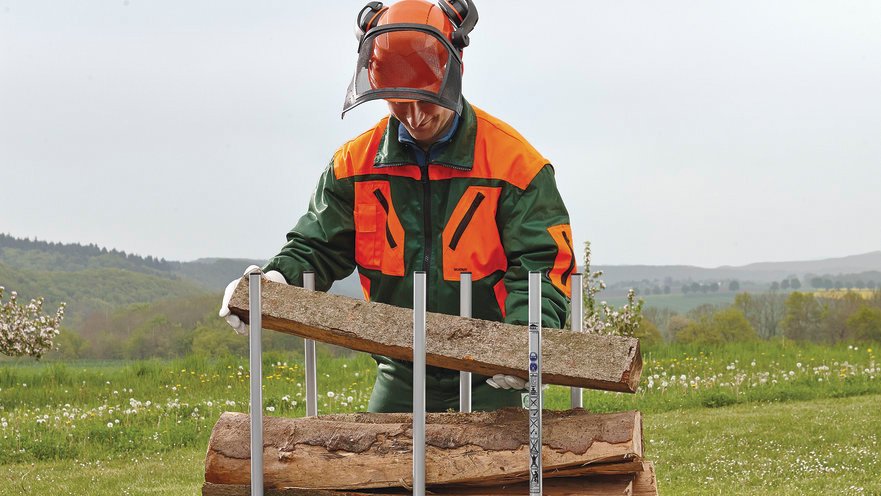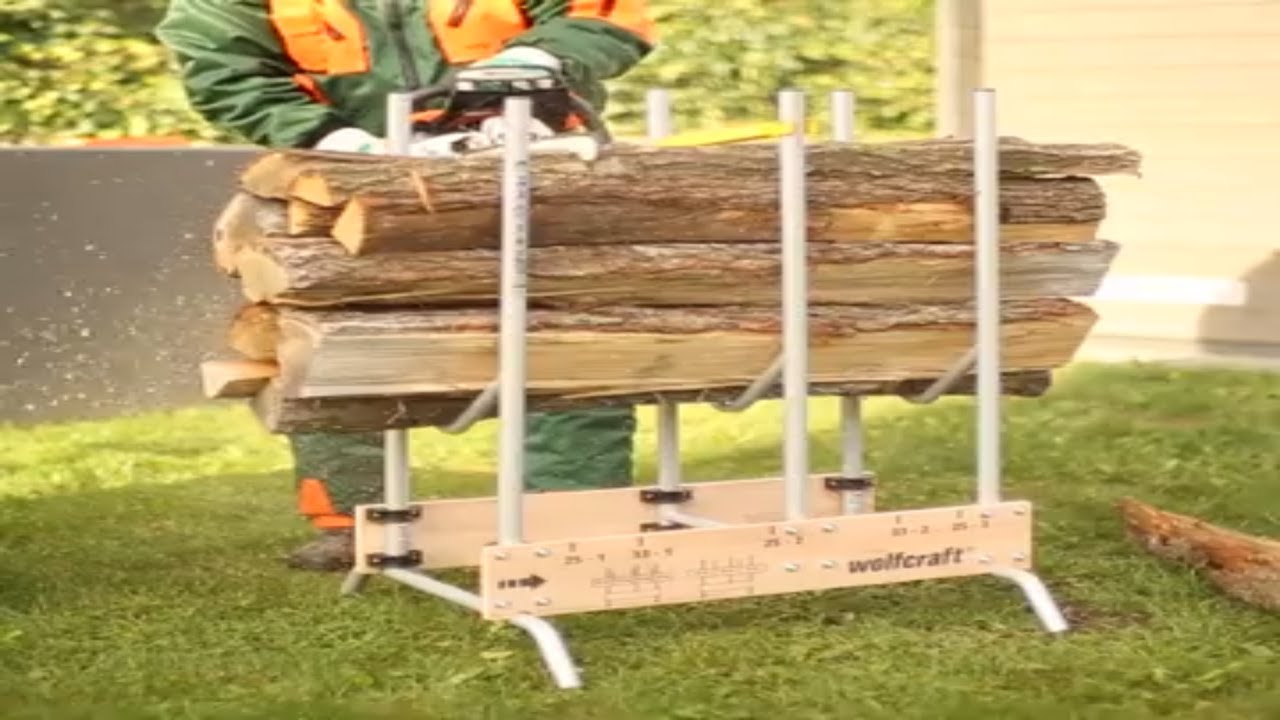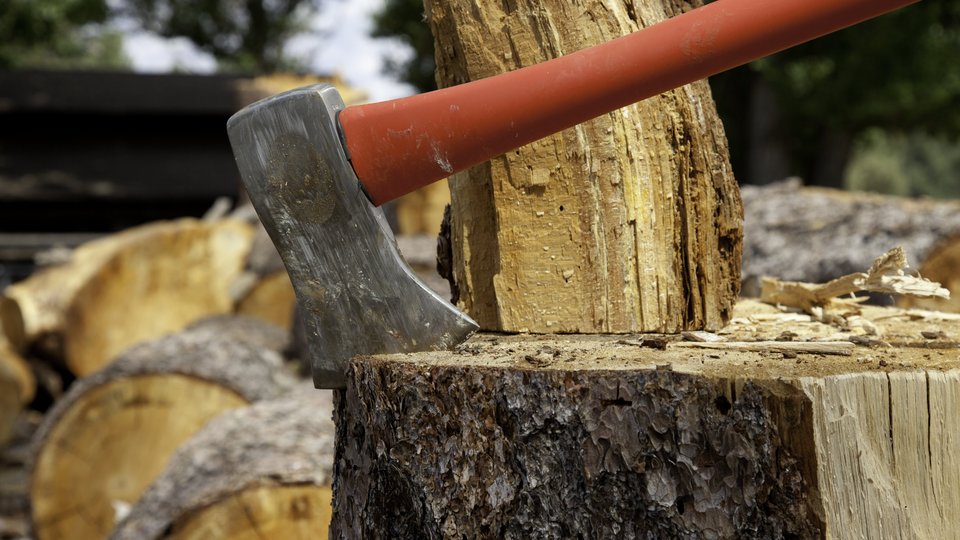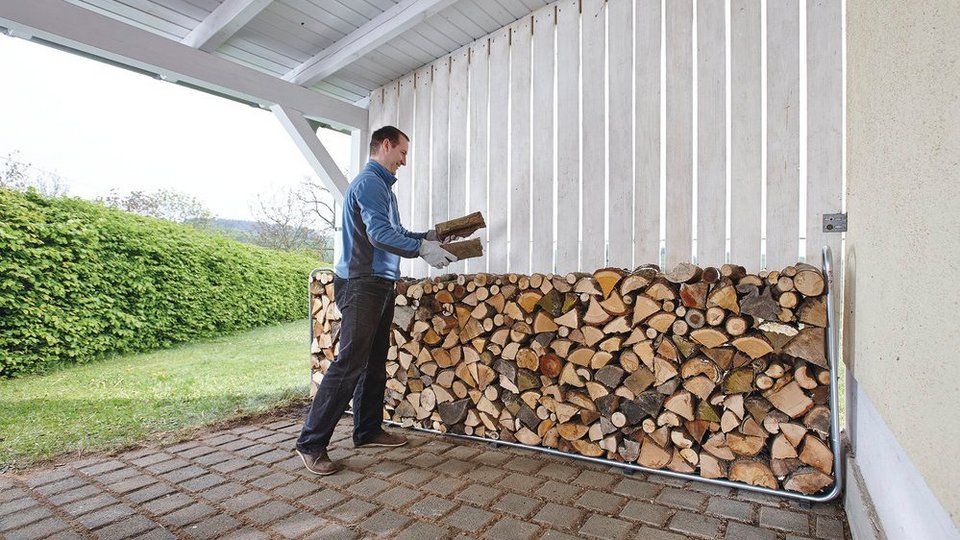Buying Trunk Wood Economically
Of course you cannot just go into the forest and fell a tree. That is prohibited in Germany and carries a fine.
The best options for getting trunk wood is to buy it from the local forest authorities, owners of private forests, or to order it from a provider and have it delivered.
Frequently there is a minimum purchase requirement – it can be well worth it to team up with friends or neighbours who also make their own firewood. The price is around 30 – 40 euros per cubic metre.
If you buy your trunk wood in a forest, the work starts right there on site, because it has to be sawn into transportable pieces.
The Right Tools and Good Protective Clothing
Whether in the forest or in your garden, you need good tools to cut wood. A quality chainsaw is absolutely essential. You also need fuel, chain oil and combination spanners. Additionally, you'll need a splitting axe, splitting wedges and hammers, as well as a saw buck.
Keep in mind that, in Germany, operating machine saws requires a special permit. The cost for the associated training course is between 100 and 200 euros, depending on the region.
Wearing appropriate protective clothing is mandatory when using the machine saw. In a worst-case scenario, the protective clothing can make the difference between life and death. Special clothing for lumberjacks is available in trade stores. For example, jackets and trousers made of a special fabric causes the chainsaw to shut down within fractions of a second when it makes contact with the chain.
However, the special fabric does not offer protection against cut injuries. It is mandatory to also wear a forestry helmet with hearing protection and visor, as well gloves and safety shoes with steel caps.

Sawing Trunk Wood
Fresh trunks have to be split into much smaller logs, so that they can dry properly. A log length of around 30 cm is ideal. For safe sawing, always use a saw buck. This enables you to split the trunk in pieces in just a few steps, without needing assistance from a second person.
Our saw bucks ensure efficiency and safety all round. They are steady as a rock, despite their low weight and compact dimensions when folded. A stop bar protects you from the danger of pieces of wood flying out; secure it between the struts for better cutting performance.


Splitting a Log
To split or chop wood, you need a solid chopping block made of hardwood. Ideally, it should have a diameter of 40 cm and a height of at least 70 cm, to protect your back while working. To cleave wood, you need a splitting hammer or splitting axe. Position the log on the rear part of the block. If you now miss the log when you swerve the axe, you will hit the block and not your feet.
Hold the axe at the end of its handle, swing it high overhead with straight arms and drive it down into the wood. Aim for an area near the edge, pointed towards the centre. Alternatively, you can also use an electric wood splitter.

Storing Firewood Correctly
The chopped wood has to dry properly before it is used. Choose a protected area for your drying pile, preferably against a wall of the house underneath a roof overhang. Stack the wood in a way that ensures good ventilation. Our practical stacking aids help you create optimum conditions for an efficient drying period. They are perfect for storing wooden logs with a length of 25-50 cm.
After approx. 2-3 years, the residual moisture should be around 20% – ideal for burning in the fireplace. Softwood dries faster, but has a lower fuel value. Determine the residual moisture with a wood moisture meter.






























